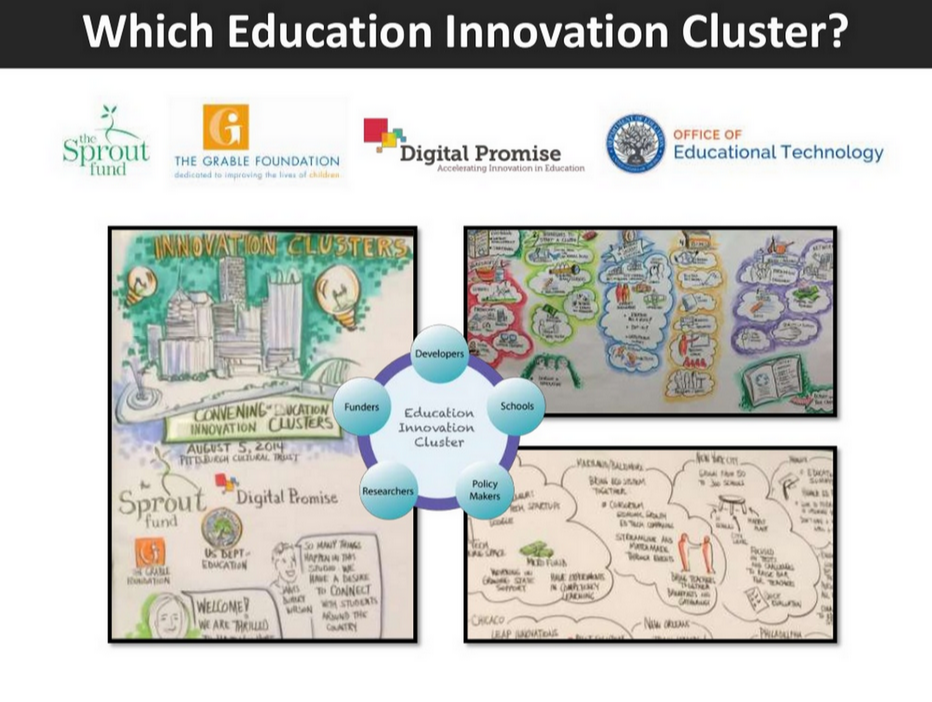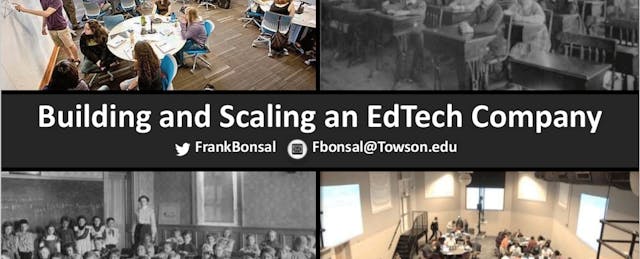Since the turn of the second Millennium, the onslaught of the dotcom bubble, and the rise and scale of the Internet, thousands of businesses have been born in order to solve real problems in education using technology, software and web services. The volume and ease of doing so has increased markedly since broadband and web services have become more commonplace, since the cost of doing so has diminished considerably, since the institutional end user base is finally starting to catch up with the consumer side of the end user equation. Teachers, administrators, technologists, parents and others have jumped into the problem-solving, company-building thesis. The barriers to starting a technology-enabled business are fairly low on the whole. But where do you start?
Where Do You Start?

First, you do NOT start an edtech business because:
- it’s cool or in vogue
- you can raise capital pegged to an idea using a 10 slide pitch deck, or
- you think it’s a get rich quick scheme.
You do it because you firmly believe you can make a difference. You do it because the problem you are solving keeps you up at night and awakens you in the morning. You do it because you are the only person alive who can get it right and to NOT do it feels criminal. You do it with rational acknowledgement that the education industry is not for the meek. It spurns or eschews the faker, the taker, the ‘quaker’ and rewards the persistent, the agile, the genuine entrepreneurs, investors and advisors who are in for the long haul in a trillion dollar industry screaming for needed innovation and productivity.
Will You Need Outside Capital?

Sometimes—a single digit percentage of times — a business requires significant amounts of capital to go to market or get to scale more quickly. Early revenue edtech companies that intend to bring quality wares to institutions must have enough front-loaded capital to build an outside sales force behind the right product and marketing mix. As a discerning entrepreneur, you must choose your capital partner carefully, at the right time and be able to build board governance and chemistry in such a way that all parties win.

The 13 firms listed above have collectively invested in over 150 for-profit education companies since 2009. You will note the left-to-right stage continuum that aligns with west and coast tolerance for risk. You will also note what is deemed The Capital Chasm, where companies must glean enough traction and cash reserves to get to expected milestones for early and growth stage investors. One rule of thumb is to have enough capital from early/inside investors to sustain three selling seasons to hit the necessary milestones before adding new investors to the syndicate.
Where Should You Build Your EdTech Company?

Where you lay down the initial footprint of your business is certainly more flexible than ever before. However, there are distinct advantages to edtech hubs from incubation through growth stage scale that warrant choosing wisely. Talent, customers, funders, policy expertise, research are all reasons to carefully discern where you scaffold a growing workforce and grow a unique company culture that withstands the inevitable highs and lows of a startup.
There are a Dozen or more evolving U.S. EdTech Hubs

The United States Office of Educational Technology and Digital Promise have been actively tracking and supporting regional education innovation clusters the last several years. I was fortunate enough to attend a cluster convening in Pittsburgh in August 2014. The breadth and individualization of the various clusters is both fascinating and inspiring. There truly are hundreds of very mission-driven people working to establish healthy places from which to improve education and entrepreneurship.
Why Maryland is a Prime EdTech Hub

My bias toward Maryland if not the Baltimore metro area is warranted and represents one of the many great ecosystems or clusters from which to grow a thoughtful edtech company. A sustainable edtech ecosystem must have the following four attributes, no one more critical than the other:
- TALENT (engineers, designers, operators, practitioners, experts in finance, education marketing and sales, policy, and research)
- CUSTOMERS (LEAs, universities, schools, government agencies, teachers, parents)
- FUNDERS (foundations, angel investors, economic development capital, venture capitalists)
- MENTORS, critical for the incubation and seed stage companies with an ever-growing number of first-time entrepreneurs.
Should You Choose a Design Lab, Accelerator, Incubator, or a Combo?
There are several very capable education design labs or studios in the Bay Area, New Orleans, Washington, DC, Philadelphia and Boston. The design thinking ideology can be the absolute best way to design, build and test a new and innovative solution or business model.

For those solutions somewhat further along or that might require a shorter gestation period, an accelerator or more edtech-focused incubator might be the best fit. Imagine K12, Kaplan EdTech Accelerator, and LearnLaunchX are the three leading edtech accelerators, but each is less than five years old. There are more mature, successful industry-agnostic tech accelerators that could be worth the 6–7% dilution, too.

Your Most Logical Source of Capital

The best way to launch a company is with a customer (or two or three) that pays you a fair price to pilot, deliver and support a quality product or service. While the ‘consumerization’ of education rightfully continues to be tested, the business model that most often bears out is a business-t0-business or B2B model where the person (or unit) most frequently ‘writing the check’ is not the same person receiving the service or product. What ever route you take, the emphasis must be on the end user from a genuine perch that imbues and endorses empathy. In the end, let not the imminent challenges or failures ahead deter you, because, as was writ by a sage 20th century academician, “hardship often prepares an ordinary person for an extraordinary destiny.” Best of luck building the wardrobe through which you find your edtech Narnia.


